Choosing Safe Toys for Your Bird
- Saifur Rahman
- Aug 11, 2024
- 20 min read

Key Takeways
Key Points | Descriptions | Implications |
Choosing Safe Materials | Select toys made from non-toxic materials like natural wood, stainless steel, and natural fibers to ensure your bird’s safety. | Using safe materials prevents health risks, such as poisoning or injury, and ensures a safe environment for your bird. |
Understanding Durability | Durable toys last longer and are less likely to break into small, dangerous pieces. | Durable toys save money and reduce the risk of choking hazards, keeping your bird safe over time. |
Providing Variety | Offering a range of toys prevents boredom and keeps your bird mentally stimulated. | Variety in toys encourages natural behaviors, promotes physical activity, and leads to a happier bird. |
Age-Appropriate Toys | Choose toys that match your bird’s age, ensuring they are neither too simple nor too complex. | Age-appropriate toys enhance engagement and development, preventing frustration or disinterest. |
Ensuring Ease of Cleaning | Select toys that are easy to clean to maintain hygiene and prevent bacterial growth. | Easy-to-clean toys help keep your bird healthy by reducing the risk of infections. |
Incorporating Interactive Features | Interactive toys like puzzles and foraging toys stimulate your bird’s mind and keep them engaged. | Interactive toys improve mental health, reduce stress, and prevent behavioral issues. |
Focusing on Design | Well-designed toys that cater to your bird’s natural behaviors enhance playtime and safety. | A good toy design ensures safe play and keeps your bird entertained and happy. |
Considering Size | Choose the right size toy based on your bird’s species and physical capabilities. | Properly sized toys prevent injuries and ensure that your bird can play comfortably and safely. |
Highlighting Color and Texture | Colors and textures in toys can attract your bird and encourage interaction. | Bright colors and varied textures stimulate your bird’s senses, promoting engagement and mental well-being. |
Adhering to Safety Standards | Ensure toys meet recognized safety standards to avoid potential hazards. | Certified toys guarantee that they are safe, reducing the risk of accidents and promoting long-term health. |
Introduction
Did you know that 70% of bird owners say their pets are happier with the right toys? Choosing the right toys for your bird isn’t just fun; it’s essential for their health and happiness. Birds need toys to stay active, engaged, and mentally stimulated.
Just like us, birds can get bored if they don’t have enough to do. The right toys prevent boredom, reduce stress, and even improve their behavior. But not all toys are created equal. It’s important to pick toys that are safe, durable, and perfect for your bird’s age and species.
This guide will help you understand how to choose safe toys that your bird will love. From materials to design, and even how to keep their toys clean, we’ve got you covered. Your bird deserves the best, and with the right toys, they’ll be happier and healthier every day.
Ready to make your bird’s life even better? Let’s dive in!
1. Materials

What materials are considered non-toxic for bird toys?
When selecting safe toys for your bird, focus on using materials like natural wood, stainless steel, and natural fibers. These are not only non-toxic but also durable. For more details on what materials are safe, you can check our guide on cage materials.
Wood: Safe if untreated and free of chemicals.
Stainless steel: Resistant to rust and easy to clean.
Natural fibers: Ideal for birds that love to chew.
How does the choice of material impact the longevity of a bird toy?
Choosing the right material affects how long your bird's toy will last. Durable materials like stainless steel and hardwood ensure that the toy can withstand the bird's play habits, reducing the need for frequent replacements. For a longer-lasting toy, consider our recommendations on the best bird toys.
Material | Longevity |
Stainless Steel | Very High |
Natural Wood | High |
Natural Fibers | Medium |
Are there any specific materials that should be avoided in bird toys?
It's important to avoid materials like lead, zinc, and certain plastics that can be harmful to your bird. These materials may cause toxicity or choking hazards. For more insights on what to avoid, explore our DIY bird toys guide.
What materials are most suitable for different bird species?
The best material often depends on your bird's species. For example, parrots may prefer hardwoods, while canaries might enjoy softer natural fibers. For a comprehensive guide, read about introducing new birds and how different species interact with their environment.
How can you verify the safety of the materials used in a bird toy?
Ensure that the toy has proper certifications and is made by a reputable brand. Checking for labels and manufacturer information is key to ensuring your bird's safety. Learn more about how to make safe choices in our cage choosing guide.
What are the benefits of using natural materials in bird toys?
Natural materials like wood and fibers are biodegradable and often better for a bird’s health. These materials also provide a more natural play experience. Explore the benefits of natural nesting requirements in our detailed guide.
2. Safety Standards
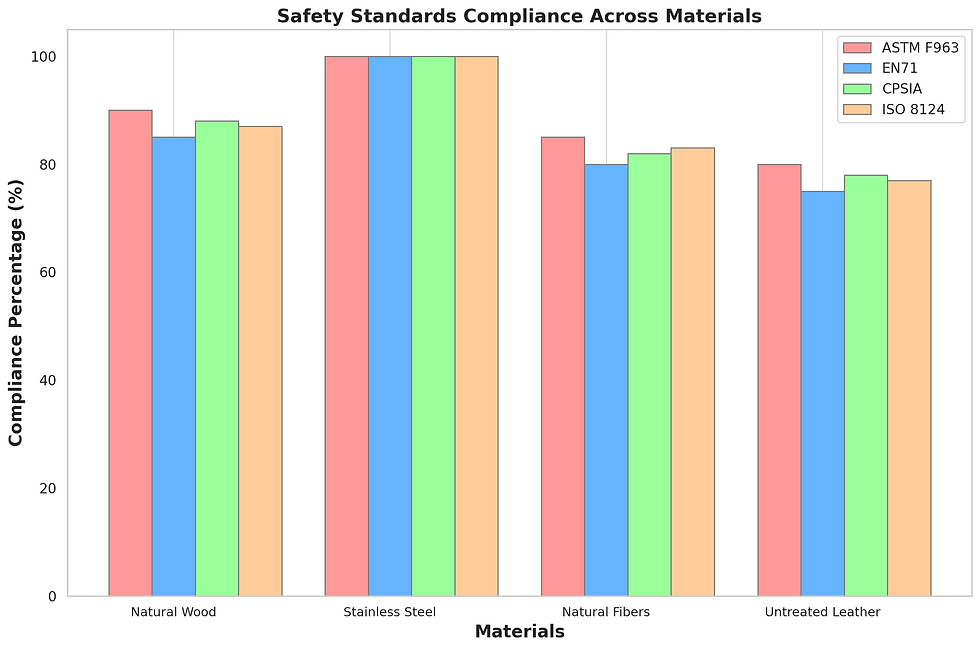
What safety standards should be checked before purchasing a bird toy?
Before buying a bird toy, ensure it meets recognized safety standards like ASTM F963 or EN71. These standards ensure that the toy has passed rigorous tests and is safe for your bird. For a more detailed look at safety standards, visit our guide on safe handling and bonding.
How can you verify if a bird toy meets international safety standards?
Look for certification marks on the packaging or product descriptions. Certification marks indicate compliance with international standards. For example, the CE mark indicates compliance with European safety standards. Learn more about the importance of certifications in our adoption benefits article.
Are there any specific certifications to look for in bird toys?
Yes, look for certifications such as the CE Mark, SGS Certification, and FSC Certification. These ensure that the toy has been independently tested and is safe for your bird. For more on certified safe products, check our cleaning the cage guide.
How do safety standards differ for toys intended for different bird species?
Toy safety standards vary depending on the bird's size and strength. For instance, parrots require toys made from stronger materials that can withstand their powerful beaks. Learn more about specific species needs in our breeding pairs guide.
What are the risks of using toys that do not meet safety standards?
Toys that don't meet safety standards can be dangerous. Risks include choking hazards, exposure to toxins, and potential injuries. To avoid these risks, always opt for toys with proper safety certifications. For more information, read our article on managing bird aggression.
How often are safety standards updated, and how can you stay informed?
Safety standards are regularly updated to reflect new research and findings. Staying informed by following regulatory updates and subscribing to industry news is crucial. To keep your bird safe, make sure you’re aware of the latest information by visiting our parasite prevention guide.
3. Brand Reputation

How does brand reputation influence the safety of bird toys?
When choosing safe toys for your bird, it’s essential to consider the brand's reputation. Reputable brands are known for their commitment to safety and quality. They often use high-quality materials that have been thoroughly tested, ensuring that your bird is safe and happy. For more on selecting the right brands, check out our guide on cleaning your bird's cage.
Consumer trust in a brand often indicates a history of safe products.
Quality assurance is a hallmark of top brands in the pet industry.
What are the top brands known for safe bird toys?
Some of the top brands that are renowned for their safe bird toys include companies like Bonka Bird Toys, Prevue Hendryx, Kaytee , Mrli Pet and Planet Pleasures. These brands are celebrated for their dedication to using non-toxic materials and creating durable products. For a more detailed review, explore our article on the best bird toys.
How can you research a brand’s reputation before purchasing a toy?
Researching a brand's reputation is easy with today's online resources. Look for customer reviews, check for any product recalls, and visit forums where bird owners discuss their experiences. Reliable brands often have a strong presence in the bird-owner community. For more tips, visit our guide on DIY bird toys where we discuss the importance of brand trust.
Are there risks associated with purchasing toys from lesser-known brands?
Yes, buying from lesser-known brands can be risky. These toys might not undergo the same level of testing or use safe materials. Always prioritize safety by sticking to brands that are trusted by other bird owners. Learn more about the importance of brand safety in our article on providing a balanced diet for your bird.
How does brand reputation correlate with the price and quality of toys?
Typically, a higher price from a well-known brand reflects the use of better materials and more rigorous testing. This investment in quality ensures your bird's safety and the toy's longevity. For a deeper understanding of how quality impacts your bird’s health, see our post on fresh foods for birds.
What should you do if a reputable brand’s toy shows signs of being unsafe?
If a toy from a reputable brand appears unsafe, stop using it immediately. Contact the manufacturer and report the issue. Most brands will offer a replacement or refund. Always share your experience to help other bird owners. For more guidance on what to do in such situations, check out our article on common bird diseases and how to keep your bird healthy.
4. Size
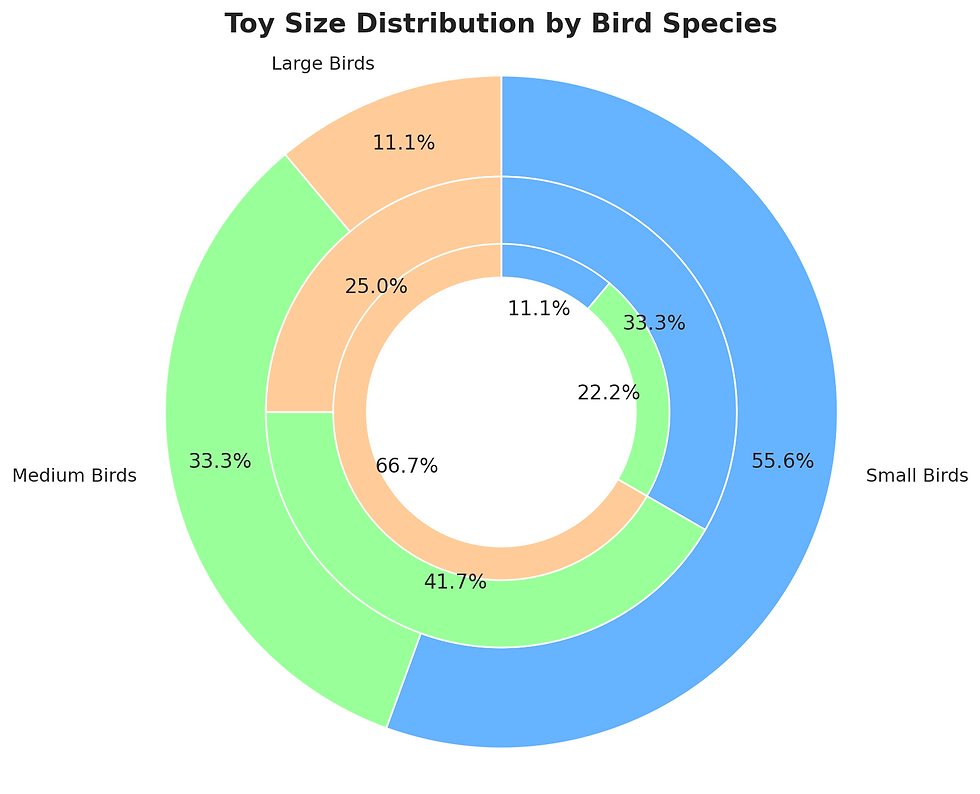
How does the size of a toy affect a bird's interest and safety?
The size of a toy plays a big role in your bird's engagement and safety. A toy that's too large can be intimidating, while one that's too small could be a choking hazard. Ensure the toy is just the right size for your bird. For more tips on ensuring your bird's environment is just right, visit our guide on cage size guidelines.
Engagement: A toy that fits well will keep your bird interested.
Safety: Proper size prevents accidents.
What factors should be considered when choosing the right size toy for your bird?
Consider your bird's species, cage size, and play style. Birds like parrots need larger toys that challenge them, while smaller birds might prefer something more manageable. For further guidance, read our article on choosing the right cage for your bird.
Are there risks associated with toys that are too small or too large?
Yes, toys that are too small can be swallowed or cause choking, while those that are too large may not be used at all. Always match the toy to your bird’s size and capabilities. For more information, check out our post on introducing new birds to your home, where size considerations are crucial.
How does the size of the bird influence the appropriate size of the toy?
Your bird’s size determines the appropriate size of the toy. A large parrot requires sturdy, larger toys, while a canary might enjoy something smaller and lighter. To understand more about the needs of different bird species, read our article on parakeet care.
What are the guidelines for choosing toys for small versus large birds?
For small birds, opt for lightweight toys that are easy to manipulate. Large birds need toys that are robust and offer a challenge. Ensure the toy is not only the right size but also suitable for your bird’s activity level. For more specific advice, check out our post on breeding basics.
Can the size of a toy impact a bird's physical activity?
Yes, the right-sized toy encourages physical activity and keeps your bird healthy. A toy that’s easy to manipulate will keep your bird moving, which is essential for their well-being. For more tips on keeping your bird active, read our guide on clicker training.
5. Design

How does the design of a toy influence a bird’s mental stimulation?
The design of a toy plays a key role in your bird’s mental stimulation. Toys with puzzles, moving parts, or foraging elements keep your bird engaged and happy. This mental activity is crucial for your bird’s overall well-being. For more on how to create a stimulating environment for your bird, visit our DIY bird toys guide.
Puzzles challenge your bird’s problem-solving skills.
Foraging toys encourage natural behaviors.
Moving parts keep your bird intrigued and active.
Are there any design features that can be dangerous for birds?
Yes, some design features like sharp edges, small parts, and loose strings can pose a danger to your bird. Always inspect toys carefully to ensure they are safe and free from potential hazards. Learn more about keeping your bird safe in our article on handling and bonding with your bird.
How can toy design cater to different bird behaviors and needs?
Birds have unique behaviors and needs that can be catered to with the right toy design. For example, chewing toys help maintain beak health, while climbing toys provide exercise. Design choices should reflect your bird's natural instincts and activity levels. For more ideas, check out our guide on nesting requirements for birds.
What are the benefits of toys with simple versus complex designs?
Simple toy designs are often easier for birds to interact with, which is great for younger or less experienced birds. Complex designs, on the other hand, can provide more extensive stimulation for birds that need a challenge. It’s important to match the toy design to your bird’s skill level and preferences. For more insights, visit our post on common bird diseases and how to prevent them with engaging activities.
How does the design of a toy impact its durability?
The design of a toy greatly affects its durability. Toys with solid construction and fewer moving parts tend to last longer, especially for birds that love to chew. For tips on choosing durable toys, see our article on cage materials that withstand wear and tear.
What are some innovative designs in bird toys that promote safety?
Innovative toy designs that promote safety include enclosed parts to prevent choking, non-toxic paints, and shatterproof materials. These features ensure that your bird can play without risk. For more information on creating a safe environment, read our guide on introducing new birds to your home safely.
6. Interactive Features

How do interactive features in toys contribute to a bird's mental health?
Interactive features in toys, like bells, mirrors, and hidden treats, are essential for maintaining your bird’s mental health. These features keep your bird engaged and reduce stress, leading to a happier, healthier pet. For more tips on enriching your bird’s environment, check out our clicker training guide.
Bells provide auditory stimulation.
Mirrors offer visual engagement.
Hidden treats encourage foraging behavior.
What are some common interactive features in bird toys?
Common interactive features include moving parts, noisemakers, and mirror reflections. These elements make playtime more dynamic and exciting for your bird, preventing boredom. For more ideas, explore our article on the best bird toys that feature these interactive elements.
Are there any risks associated with highly interactive toys?
While interactive toys are great for stimulation, they can also pose risks if not chosen carefully. Overstimulation or frustration can occur if the toy is too complex or noisy. It’s important to balance fun with safety. For more guidance, read our article on understanding bird fear responses.
How can interactive features be tailored to a bird's specific needs?
You can tailor interactive features to suit your bird’s preferences by considering their species, age, and personality. For example, younger birds might enjoy simpler toys, while older, more experienced birds might prefer more challenging features. For more personalized tips, see our guide on managing bird aggression through appropriate toys.
What role do interactive features play in preventing boredom in birds?
Interactive features are crucial in preventing boredom, which can lead to negative behaviors. Toys that offer variety and challenge keep your bird entertained and mentally stimulated. For more on preventing boredom, check out our post on bonding techniques with your bird through play.
How do interactive features affect the longevity and durability of a toy?
Interactive features can sometimes reduce a toy’s durability due to frequent use, especially if they involve moving parts or sound elements. Choose toys made from durable materials to ensure they last longer, even with interactive elements. For more tips on choosing long-lasting toys, visit our article on nail trimming and care for birds.
7. Texture
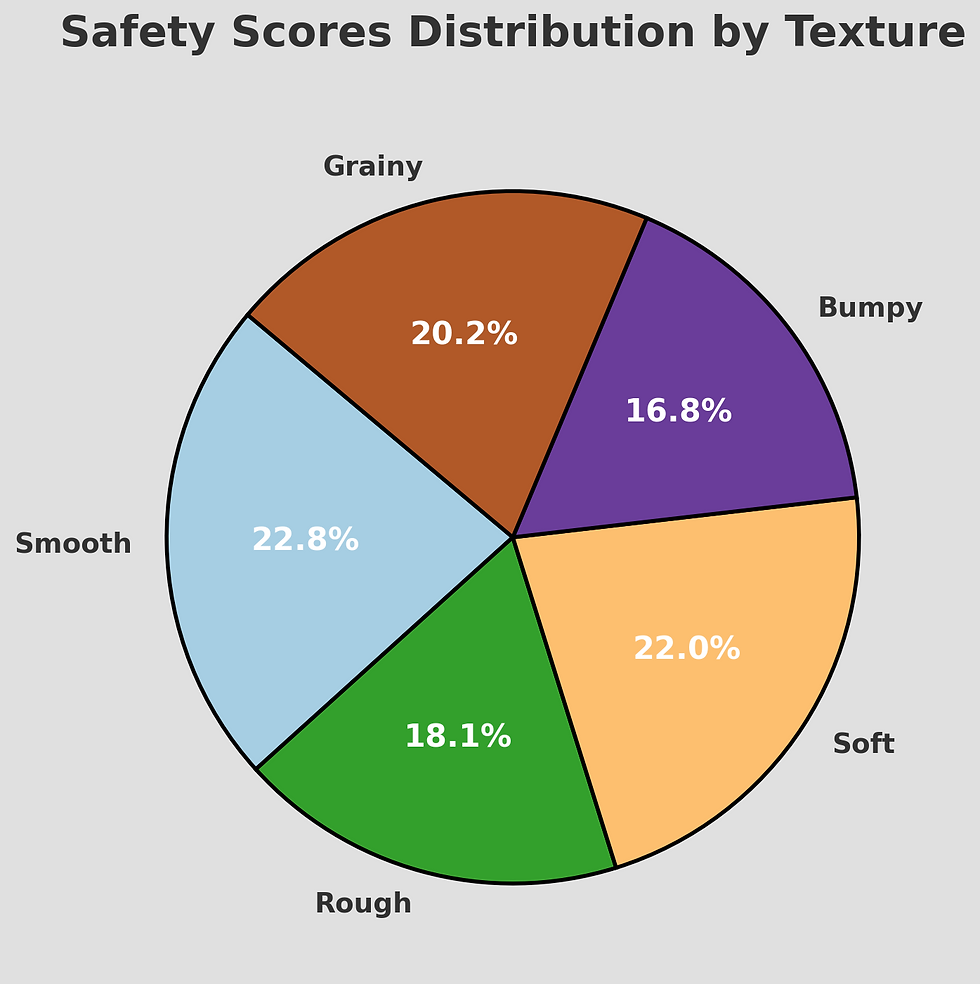
How does texture impact a bird's interest in a toy?
The texture of a toy can greatly influence your bird's interest. Birds love exploring different textures with their beaks and claws. A toy with a mix of soft, rough, and smooth textures will keep your bird engaged and curious. For more ideas on stimulating your bird, check out our DIY bird toys guide.
Soft textures provide comfort and ease for delicate beaks.
Rough textures help with beak conditioning and enrichment.
Mixed textures stimulate your bird's curiosity and playfulness.
Are there textures that are more likely to cause wear and tear on a bird's beak or claws?
Certain textures, like very rough or abrasive surfaces, can cause wear and tear on your bird's beak and claws. It's important to monitor how your bird interacts with these textures to prevent any damage. For more information on caring for your bird's beak and claws, visit our guide on nail trimming.
What textures are considered safe and engaging for birds?
Natural textures like wood, rope, and untreated leather are both safe and engaging for birds. These materials encourage natural behaviors like chewing and climbing, which are beneficial for your bird’s health. For more tips on choosing the right materials, read our article on cage materials that are safe for birds.
How can texture variety in toys contribute to a bird’s sensory enrichment?
Providing a variety of textures in toys enhances your bird’s sensory enrichment. This variety encourages your bird to explore and interact with their environment more fully. Sensory enrichment is crucial for keeping your bird mentally stimulated and happy. For more ideas on sensory enrichment, check out our fresh foods guide to introduce new textures in their diet as well.
Are there any risks associated with certain textures in bird toys?
Some textures, like frayed ropes or splintered wood, can pose risks such as choking or injury. Always inspect your bird’s toys for any signs of wear and replace them as needed. For more on keeping your bird safe, visit our article on common bird diseases and how to prevent accidents.
How does texture influence a bird's ability to grip or manipulate a toy?
The texture of a toy affects your bird’s ability to grip and manipulate it. Toys with a good grip will be easier for your bird to hold and play with, enhancing their interaction and enjoyment. For more tips on selecting the best toys for your bird, read our guide on the best bird toys.
8. Color
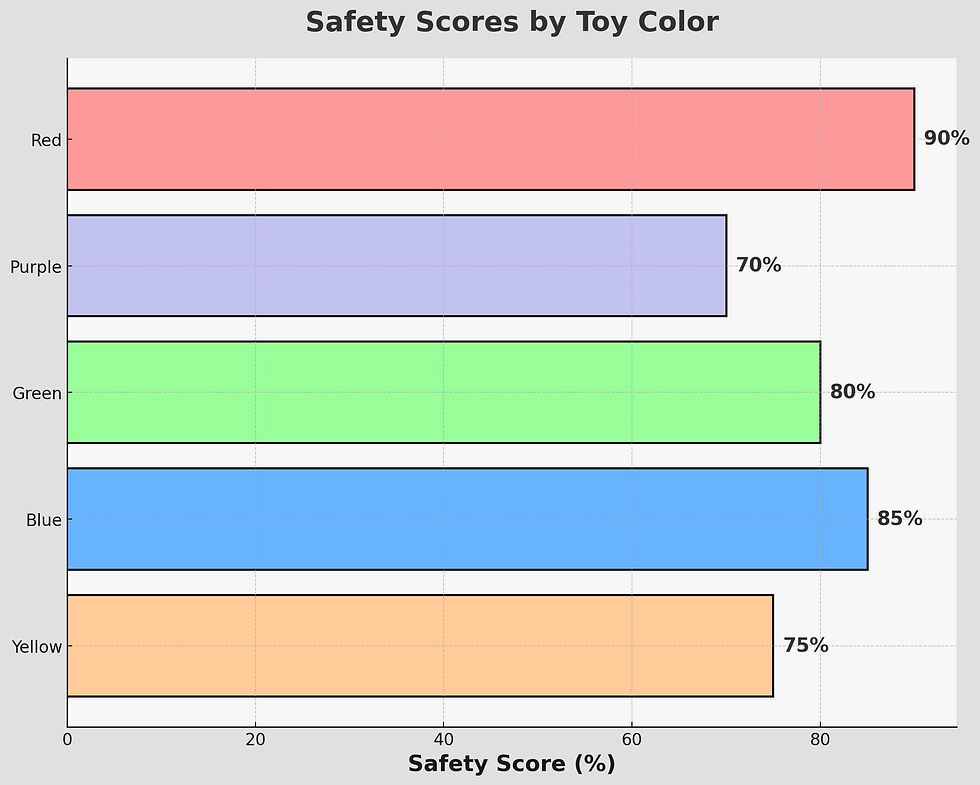
How does color choice influence a bird's interaction with a toy?
The color of a toy can significantly influence your bird's interaction with it. Bright, vibrant colors often attract birds and encourage play. Different colors can also stimulate your bird's mood and behavior. For more on how color affects your bird's environment, check out our cage placement guide.
Bright colors stimulate curiosity and excitement.
Cool colors can have a calming effect on birds.
Are there colors that are more attractive or stimulating to birds?
Birds are naturally drawn to bright colors like red, yellow, and green. These colors can make toys more appealing and increase interaction. For more on choosing the best colors for your bird's toys, visit our guide on choosing the right cage for your bird.
How can color be used to ensure the visibility and safety of a toy?
Using high-contrast colors can improve the visibility of toys, making them easier for your bird to see and engage with. This also helps in preventing accidents. For more tips on ensuring your bird's safety, check out our article on cleaning your bird's cage to maintain a safe environment.
What role does color play in a bird's psychological well-being?
Color can greatly influence your bird's psychological well-being. Bright, cheerful colors can enhance their mood, while softer tones can be calming. Understanding how color affects your bird can help in choosing the right toys. For more on keeping your bird happy, read our guide on bonding techniques with your bird.
Can certain colors be harmful or overstimulating to birds?
While bright colors can attract birds, overly intense or flashing colors might overstimulate them. It's important to balance bright colors with more neutral tones to avoid stress. For more on managing your bird’s stress, visit our article on understanding bird fear responses.
How does the color of a toy affect a bird's mood or behavior?
The color of a toy can have a direct impact on your bird's mood and behavior. Bright colors can energize and engage your bird, while cooler tones might help them relax. For more on creating the best environment for your bird, explore our post on cage size guidelines and how color plays a role.
9. Durability
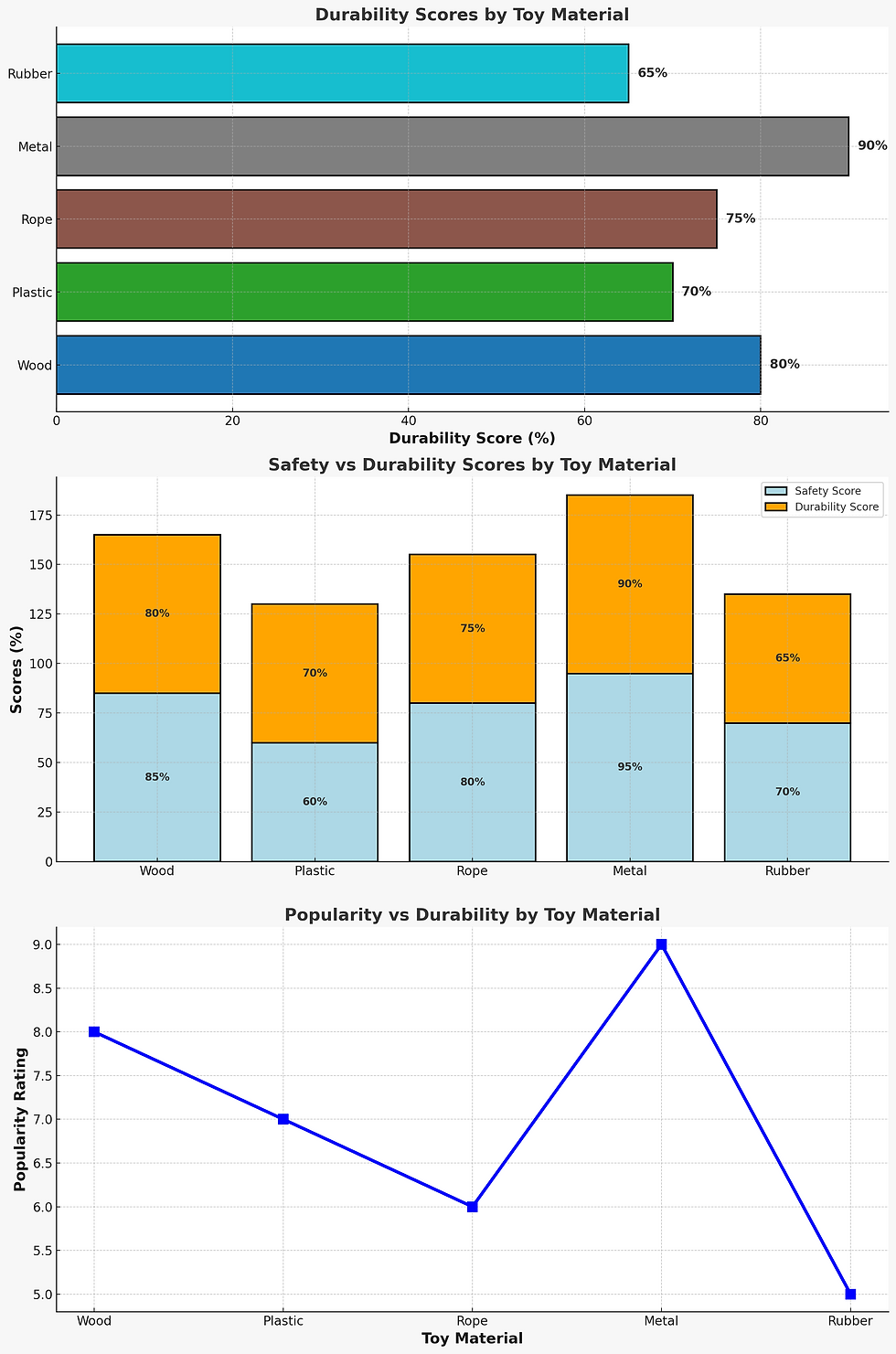
How does the durability of a toy affect its safety over time?
Durability is a key factor in the safety of your bird’s toys. A toy that lasts longer is less likely to break into small, dangerous pieces that your bird could swallow. High-quality materials like wood or stainless steel ensure that the toy remains safe and intact over time. For more tips on choosing durable items for your bird, check out our guide on choosing the right cage.
Durable toys prevent breakage that could harm your bird.
Sturdy materials like stainless steel last longer and stay safe.
What are the signs that a toy is no longer durable and should be replaced?
Look for signs like cracks, loose parts, or significant wear. If a toy shows any of these, it’s time to replace it to avoid potential hazards. Keeping your bird’s environment safe is crucial. For more on maintaining safety, visit our guide on cleaning the cage regularly to remove worn-out toys.
How does bird species impact the durability requirements of a toy?
The species of your bird determines how tough a toy needs to be. Larger birds with stronger beaks, like parrots, need more durable toys compared to smaller birds like canaries. Choose toys that match your bird’s strength and play style. For more insights, see our article on caring for parakeets and the types of toys they need.
What materials are known for their durability in bird toys?
Materials like stainless steel, hardwood, and thick rope are known for their durability. These materials can withstand the wear and tear of regular play, keeping your bird entertained and safe. For more tips on selecting the right materials, visit our article on cage materials that last.
How can you assess the durability of a toy before purchasing?
Before buying, check the toy’s construction, material quality, and reviews. A well-built toy will have smooth edges, secure parts, and positive feedback from other bird owners. For more guidance, read our post on the best bird toys available today.
Are there any benefits to having less durable toys that can be easily replaced?
Less durable toys can be beneficial as they are often more affordable and can be swapped out frequently, keeping your bird’s environment fresh and exciting. However, always ensure they are safe while they last. For more on keeping your bird engaged, see our guide on adding fresh foods to their diet for variety.
10. Ease of Cleaning
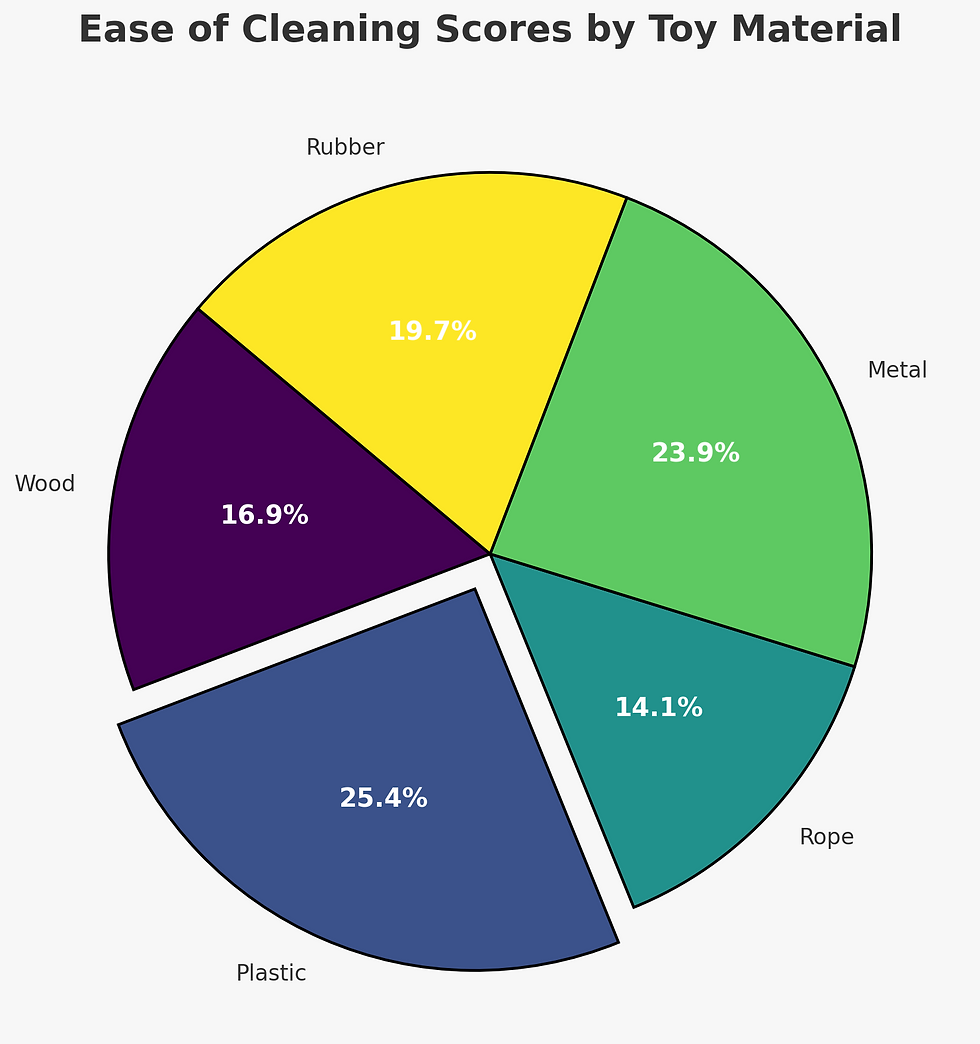
How important is the ease of cleaning when selecting bird toys?
Ease of cleaning is crucial when choosing bird toys. Toys that are easy to clean help maintain hygiene and prevent the growth of bacteria. This keeps your bird healthy and happy. For more tips on keeping your bird's space clean, read our article on cleaning the cage efficiently.
Easy-to-clean toys prevent bacteria buildup.
Regular cleaning is key to a healthy bird environment.
What materials are easiest to clean without compromising safety?
Materials like stainless steel and hard plastic are the easiest to clean and do not compromise safety. These materials can be wiped down or soaked without degrading. For more on safe and easy-to-maintain items, check out our guide on cage materials that last.
How often should bird toys be cleaned to ensure hygiene?
Clean your bird’s toys at least once a week or more often if they are heavily used. Regular cleaning helps prevent the buildup of droppings, food particles, and bacteria. For more on maintaining a clean environment, visit our post on daily bird care routines.
Are there specific cleaning methods for different types of toys?
Different toys require different cleaning methods. For example, soak rope toys in warm water, while stainless steel toys can be scrubbed with a mild detergent. Always follow the cleaning instructions specific to each material. For more detailed cleaning tips, see our article on handling and bonding with your bird.
What are the signs that a toy is not being cleaned properly?
Signs that a toy is not being cleaned properly include visible dirt, odors, or changes in your bird's health, like respiratory issues. Regularly inspect and clean toys to avoid these problems. For more on keeping your bird healthy, visit our guide on common bird diseases and their prevention.
Can ease of cleaning impact the durability of a toy?
Yes, toys that are easy to clean tend to last longer because they don’t degrade as quickly from frequent washing. Choosing durable, easy-to-clean materials ensures your bird’s toys remain safe and functional. For more on choosing long-lasting toys, read our article on bonding techniques with your bird.
11. Variety

Why is variety important in a bird's toy collection?
Variety is crucial in a bird's toy collection because it keeps your bird mentally stimulated and prevents boredom. Different toys cater to different activities like foraging, climbing, or chewing, which are all essential for your bird's well-being. For more ideas on enriching your bird's environment, check out our guide on DIY bird toys.
Different toys engage your bird in various activities.
Rotating toys regularly keeps your bird interested and happy.
How does variety in toys contribute to a bird's overall well-being?
Introducing a variety of toys contributes to your bird’s overall well-being by providing physical exercise, mental challenges, and emotional comfort. A diverse toy collection ensures that your bird’s needs are met, leading to a healthier and happier pet. For more tips on bird care, explore our article on daily bird care routines.
What are some examples of toys that offer variety in a bird's environment?
Toys like foraging puzzles, climbing ropes, and chewing blocks offer variety in your bird’s environment. Each type of toy targets a different aspect of your bird’s natural behavior, ensuring they remain engaged and content. For more examples, check out our post on the best bird toys available.
How can you ensure a balance of variety without overwhelming the bird?
You can ensure a balance of variety by rotating toys regularly and observing your bird’s preferences. Introducing new toys gradually and removing those that your bird no longer enjoys will keep the environment fresh without causing stress. For more guidance, visit our article on bonding techniques with your bird.
How does introducing new toys affect a bird’s behavior?
Introducing new toys can positively affect your bird’s behavior by reducing stress, preventing boredom, and encouraging exploration. New toys stimulate your bird’s curiosity, which is essential for their mental health. For more on how to manage your bird’s environment, read our guide on introducing new birds to your home.
What are the risks of not providing enough variety in bird toys?
Not providing enough variety in bird toys can lead to boredom, stress, and even behavioral issues like feather plucking. A lack of stimulation can negatively impact your bird’s physical and mental health. To avoid these risks, ensure your bird has access to a diverse range of toys. For more on preventing behavioral issues, check out our post on managing bird aggression.
12. Age Appropriateness
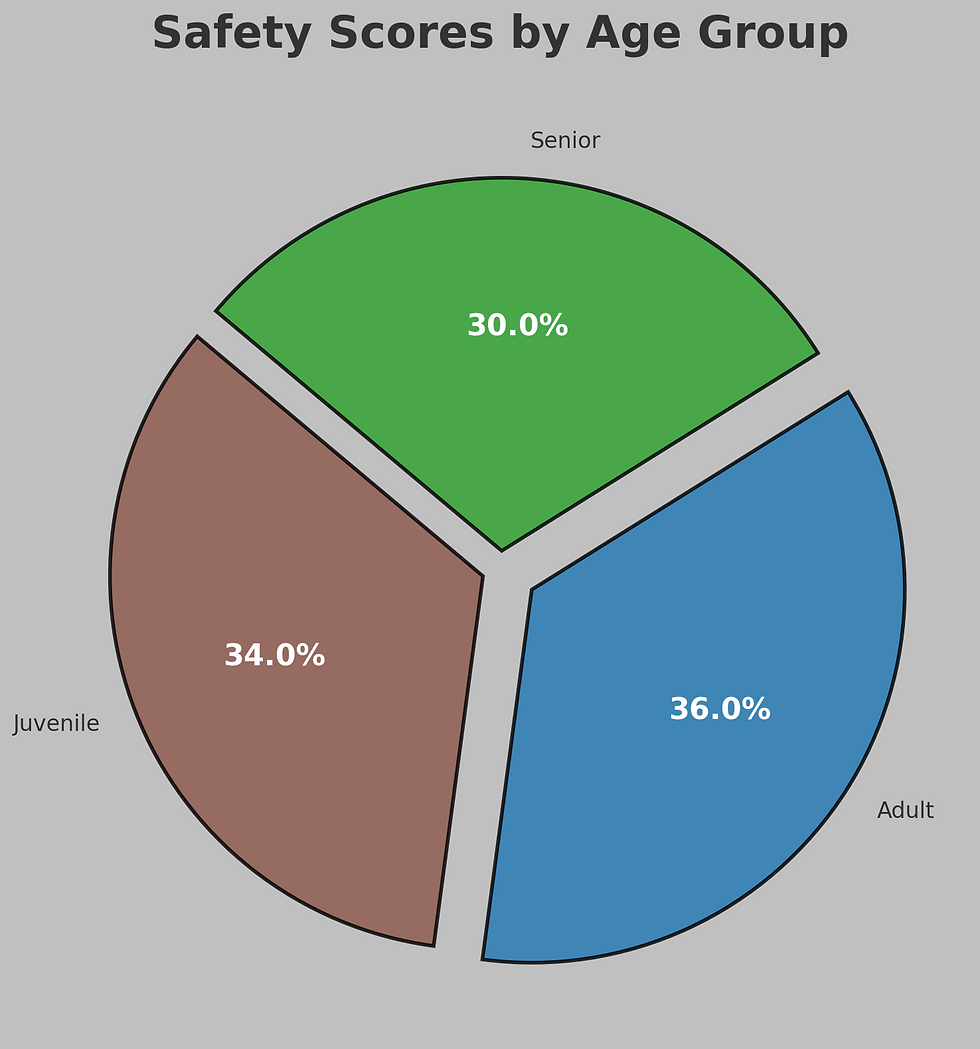
How does a bird's age affect the type of toys they need?
A bird’s age plays a significant role in determining the type of toys they need. Younger birds may prefer simpler, more interactive toys that are easy to manipulate, while older birds might enjoy more complex toys that challenge their minds. For more on catering to your bird’s needs, read our article on nail trimming and care for birds of all ages.
Younger birds need toys that encourage play and learning.
Older birds benefit from toys that offer mental stimulation.
What are the risks of giving age-inappropriate toys to birds?
Giving age-inappropriate toys to birds can lead to frustration or disinterest. A toy that is too complex for a young bird may be ignored, while a simple toy might not engage an older bird. It’s important to match the toy to your bird’s developmental stage. For more tips, visit our guide on providing a balanced diet that supports all life stages.
How can you determine if a toy is suitable for your bird’s age?
Observe how your bird interacts with the toy. If they show interest and can engage with it easily, it’s likely a good fit. On the other hand, if they seem uninterested or frustrated, consider switching to a toy more appropriate for their age. For more on understanding your bird’s needs, explore our article on common bird behaviors.
What types of toys are best for young birds versus older birds?
Young birds often enjoy toys that make noise or are easy to chew, while older birds might prefer toys that offer a challenge, like puzzle toys. Selecting the right toys ensures your bird remains engaged and satisfied at every stage of life. For more on selecting the right toys, check out our post on bonding techniques with your bird.
How does age affect a bird's interaction with toys?
A bird’s age affects how they interact with toys. Younger birds are often more playful and active, while older birds might prefer more relaxed or mentally stimulating activities. Understanding these changes can help you choose the right toys to keep your bird happy and healthy. For more on caring for birds at different ages, visit our guide on daily bird care routines.
Can certain toys help in the development of young birds?
Yes, certain toys can aid in the development of young birds by promoting learning, coordination, and problem-solving skills. Toys that encourage exploration and play are especially beneficial during a bird’s early stages. For more on helping your young bird grow, check out our article on teaching basic commands to your bird.
Conclusion
Choosing the right toys for your bird is one of the best things you can do to keep them happy and healthy. We’ve learned that the right toys are safe, durable, and suited to your bird’s age and species. By providing a variety of toys, you prevent boredom and ensure your bird stays mentally and physically active.
Remember, toys are not just for fun—they’re essential for your bird’s well-being. When you select toys that are easy to clean, made from safe materials, and designed to engage your bird, you’re creating a happier, more fulfilling life for them.
Choose safe materials and designs.
Offer a variety of toys to keep your bird engaged.
Regularly clean and rotate toys to maintain hygiene and interest.
Your bird deserves the best, and with the right toys, they’ll thrive. Keep exploring, keep learning, and watch your bird’s happiness soar!



Comments